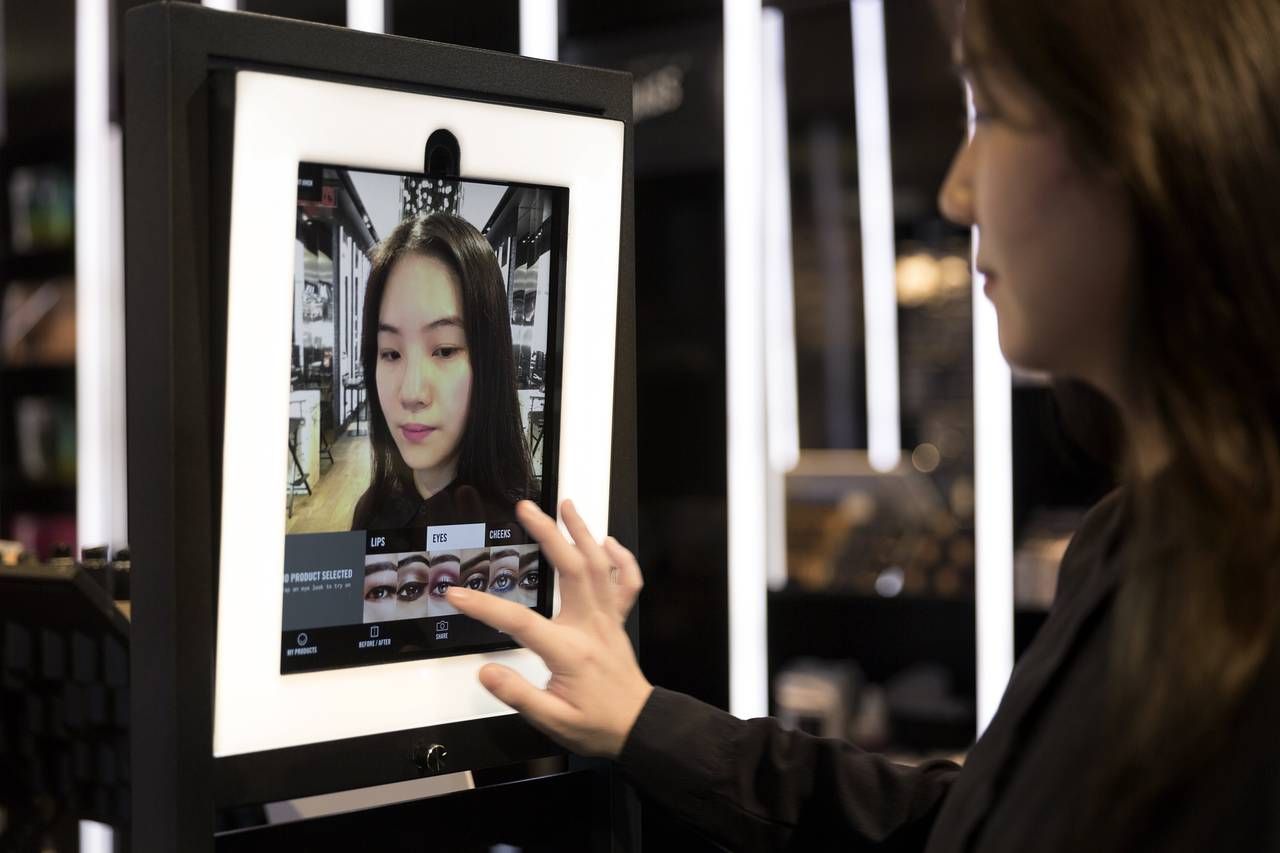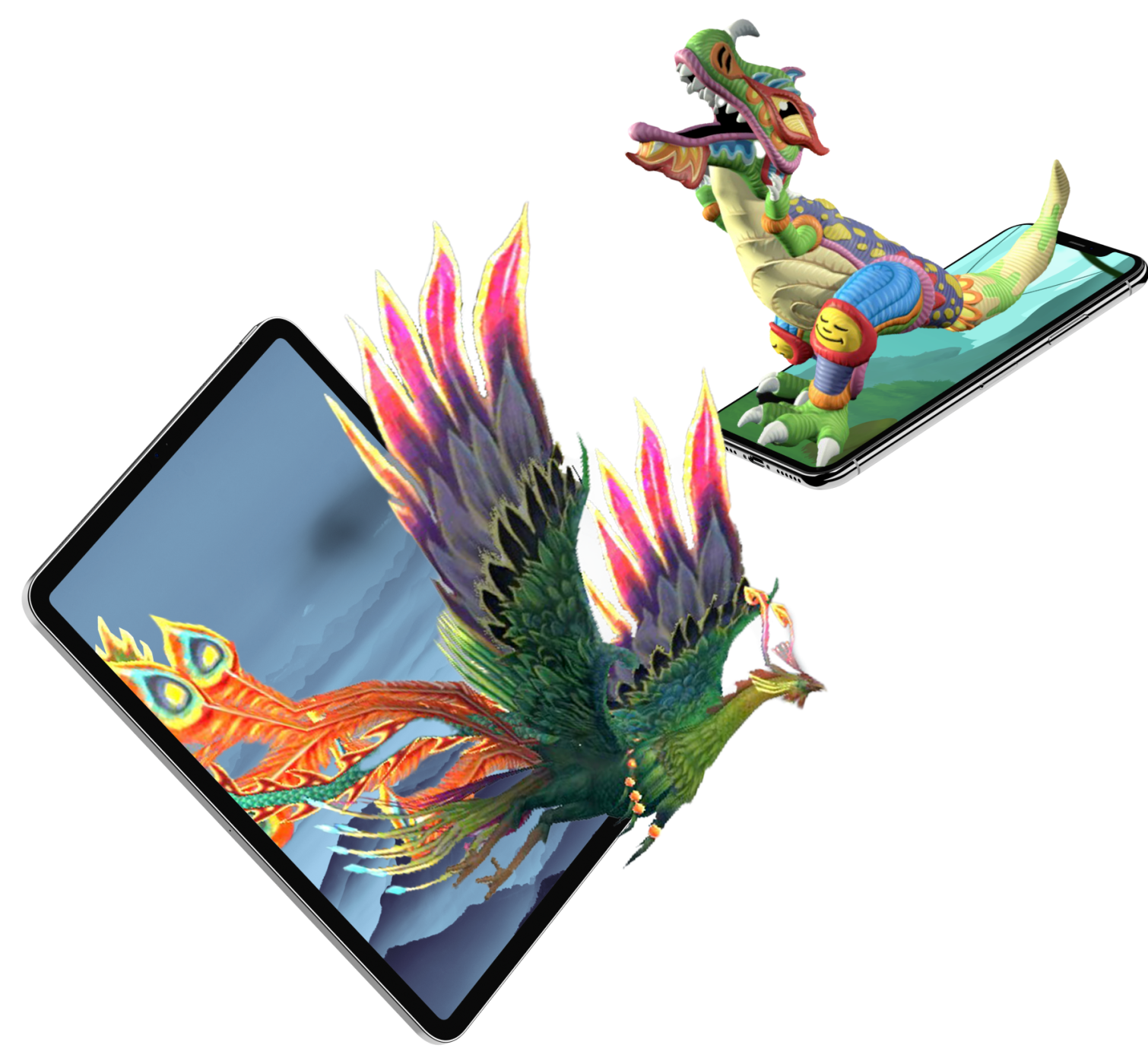AI-Driven Augmented and Virtual Reality Training and Simulations: Transforming Enterprise Workforce Development
Executive Summary
The convergence of artificial intelligence with augmented and virtual reality technologies is revolutionizing corporate training methods across industries. As Fortune 500 companies encounter increasingly complex operational challenges, the strategic implementation of AI-enhanced immersive learning environments presents unprecedented opportunities to accelerate skills development, reduce costs, and enhance performance outcomes. This article examines the current landscape of AI-driven AR/VR training solutions, provides evidence-based ROI analysis, and outlines frameworks for enterprise-scale deployment.
The Evolution of Enterprise Training Paradigms
Traditional corporate training methodologies have long faced fundamental limitations: scalability constraints, inconsistent delivery, limited personalization, and difficulties in measuring effectiveness. According to research by the Brandon Hall Group, companies spend approximately $1,111 per employee annually on training initiatives. Yet, 70% of employees report forgetting what they've learned within just 24 hours of traditional training sessions.
The digital transformation of learning and development has progressed through several distinct phases:
- Classroom to e-Learning (2000-2010): The initial shift from in-person instruction to digital content delivery
- Mobile Learning Revolution (2010-2015): The rise of on-demand, device-agnostic training content
- Immersive Learning Emergence (2015-2020): Early adoption of AR/VR solutions for specialized training scenarios
- AI-Enhanced Immersive Learning (2020-Present): The integration of artificial intelligence with immersive technologies to create adaptive, personalized training environments
This latest evolution represents a fundamental shift in how organizations approach skills development. McKinsey research indicates that companies implementing AI-driven immersive training solutions are seeing productivity improvements of 30-50% in technical roles and 15-25% in management functions.
Understanding the Technology Ecosystem
The AI-driven AR/VR training ecosystem comprises several interdependent technological components:
Artificial Intelligence Foundations
Modern enterprise training solutions leverage multiple AI capabilities:
- Natural Language Processing (NLP): Enables conversational interfaces, real-time language translation, and semantic analysis of learner responses
- Computer Vision: Facilitates environmental mapping, object recognition, and analysis of user movements/actions
- Machine Learning: Powers adaptive learning algorithms, performance prediction, and personalized content delivery
- Deep Learning: Enables pattern recognition, complex decision-making simulations, and behavior modeling
Immersive Technology Platforms
The delivery mechanisms for AI-enhanced training generally fall into three categories:
- Virtual Reality (VR): Fully immersive environments requiring specialized headsets (Meta Quest Enterprise, HTC Vive Focus, Microsoft HoloLens)
- Augmented Reality (AR): Digital overlays on physical environments, accessible via smartphones, tablets, or specialized glasses
- Mixed Reality (MR): Hybrid experiences where physical and digital objects coexist and interact in real-time
Integration Infrastructure
Enterprise-grade AI-AR/VR solutions require robust technological foundations:
- Cloud Computing: Enables processing-intensive AI operations without endpoint hardware limitations
- Edge Computing: Reduces latency for time-sensitive interactions and enables offline functionality
- 5G Connectivity: Facilitates higher data throughput for more complex simulations and multi-user experiences
- Enterprise Integration: APIs and middleware connecting training platforms with HRIS, LMS, and performance management systems
What Is Immersive Learning?
Immersive learning is an innovative approach to education and training that leverages technology to create deeply engaging and interactive experiences for learners. Instead of passively learning through text, images, or lectures, immersive learning integrates learners directly into realistic environments—physically, virtually, or a combination of both. This learning modality helps participants develop practical skills, critical thinking abilities, and contextual understanding by allowing them to interact with digital objects, virtual simulations, and augmented overlays that reflect real-world scenarios.
Key Characteristics of Immersive Learning
- Engagement: Immersive learning environments capture learners’ attention more effectively than traditional methods. By allowing students or trainees to interact within simulated conditions, immersion encourages active participation and maintains high levels of focus.
- Realism: Immersive learning replicates real-world scenarios as closely as possible. Whether using AR to overlay digital elements onto physical machinery or VR to fully transport learners to a simulated workplace, the goal is to mimic reality in a controlled environment.
- Interactivity: Immersive learning goes beyond reading or listening; users can manipulate virtual objects and receive immediate feedback based on their actions. This interactivity enables deeper comprehension since learners get to “learn by doing” rather than simply observing.
- Adaptive Learning Paths: With the data-capturing capabilities of immersive technologies, learning experiences can be personalized. Learners receive prompts, hints, and challenges that dynamically adjust to their performance level, addressing gaps and reinforcing strengths in real time.
Why Immersive Learning Matters
In our digital age, individuals are inundated with information from various sources, making it increasingly challenging to capture and hold attention. Immersive learning addresses this issue by creating an engaging environment that naturally compels learners to stay focused. Moreover, it offers hands-on practice in settings that may otherwise be risky, expensive, or logistically difficult to replicate. This practicality is particularly crucial in fields such as healthcare, where mistakes can cost lives, and in industrial operations, where even small errors can lead to substantial financial losses.
By bridging the gap between theory and practice, immersive learning prepares individuals to tackle real-world tasks confidently. It also allows businesses and educational institutions to track learner progress more effectively, leveraging analytics to refine training programs. Consequently, immersive learning boosts both the speed and quality of skill acquisition—a win-win for all stakeholders involved.
Understanding Augmented Reality (AR)
Augmented Reality (AR) overlays digital content onto the physical world, creating a composite view that blends real and virtual elements. Unlike Virtual Reality, which fully immerses users in a digitally created environment, AR users can still see and interact with their immediate physical surroundings. This technology typically uses smartphone apps, smart glasses, or headsets that project computer-generated images, text, or 3D models onto real-world objects.
How AR Works
AR relies on advanced computer vision and image processing algorithms to detect and track objects in the user’s environment. Cameras capture live video streams that are analyzed in real time, enabling the AR system to identify surfaces, shapes, and movements. The AR application superimposes the corresponding digital information when certain patterns or markers are detected. In markerless AR, position and orientation are determined through more sophisticated algorithms, enabling the seamless integration of virtual objects into any setting.
Benefits of Using AR in Training
- Contextual Learning: AR delivers information precisely when and where it is needed. For instance, a technician repairing complex machinery could see step-by-step instructions overlaid directly onto the machine parts.
- Cost Reduction: Some training programs involve expensive equipment, travel costs, or potential damage to real objects. AR replaces or reduces the need for these overheads, making practical training more cost-effective.
- Scalability: AR applications can be deployed on many people's mobile devices. This lowers the barrier to entry and allows wide-scale adoption without significant infrastructure changes.
- Enhanced Collaboration: AR tools can facilitate remote collaboration, enabling experts in different locations to see a live view of a trainee’s environment and provide real-time guidance.
Examples of AR in Learning and Development
- Medical Training: Medical students can use AR to visualize patient anatomy or practice complex procedures without risk to actual patients.
- Manufacturing: AR headsets provide assembly line workers with on-the-spot instructions, reducing errors and increasing efficiency.
- Retail: Sales associates practice customer interactions while visualizing product information and inventory data overlaid onto store shelves.
- Field Service: Field technicians use AR to troubleshoot equipment, receive guidance from remote experts, and reduce repair times.
AR proves particularly beneficial in scenarios where real-world context is essential. By layering digital insights onto the physical environment, AR empowers learners to bridge theory and practice swiftly, translating to quicker adaptation and better on-the-job performance.
Strategic Applications Across Industry Verticals
Fortune 500 organizations across sectors are implementing AI-driven immersive training with remarkable results:
Manufacturing & Industrial Operations
The manufacturing sector has been at the forefront of AR/VR adoption, with applications including:
- Equipment Operation Training: AI-driven simulations that adapt to learner mistakes and provide personalized guidance
- Maintenance Procedure Rehearsal: AR overlays showing step-by-step repair procedures with real-time feedback
- Safety Protocol Training: Immersive scenarios modeling workplace hazards without actual risk
Boeing's implementation of AR-assisted assembly instructions reduced production time by 25% and error rates by 40%, while Volkswagen's VR training program has accelerated technician certification by 30%.
Healthcare & Life Sciences
The healthcare industry has embraced immersive training for high-stakes scenarios:
- Surgical Simulation: AI-powered VR environments for procedure rehearsal with haptic feedback
- Patient Interaction Training: Virtual patients powered by NLP for developing communication skills
- Emergency Response Preparation: Dynamic scenarios that adapt based on clinician decisions
Mayo Clinic's deployment of AI-VR surgical training reduced procedural errors by 40% and shortened learning curves by up to 50% for complex interventions.
Financial Services & Professional Services
Knowledge-intensive industries are leveraging immersive technologies for:
- Customer Interaction Training: AI-driven role-playing simulations with natural language processing
- Compliance Education: Interactive scenarios modeling ethical dilemmas and regulatory challenges
- Leadership Development: Virtual team management simulations with adaptive difficulty
Bank of America's use of VR-based customer service training enhanced client satisfaction scores by 20% and decreased training time by 40%.
Retail & Consumer Products
Consumer-facing businesses are implementing AI-AR/VR training for:
- Visual Merchandising: AR applications teaching optimal product placement and display techniques
- Customer Service Scenarios: AI-powered simulations of challenging customer interactions
- Product Knowledge Training: Interactive 3D product models with embedded information
Walmart's VR training initiative has improved test scores by 10-15% while reducing training time by 30%, with over 1 million employees trained across 4,700 stores.
Implementation Framework for Enterprise Adoption
Successful enterprise deployment of AI-enhanced immersive training requires a structured approach:
Strategic Assessment Phase
- Skills Gap Analysis: Identify critical capabilities requiring development
- Use-Case Prioritization: Determine high-impact applications with favorable cost-benefit ratios
- Technology Infrastructure Evaluation: Assess current capabilities and required investments
- Change Management Planning: Develop strategies for organizational adoption
Pilot Implementation
- Solution Selection: Evaluate vendor capabilities against organizational requirements
- Limited Deployment: Implement in controlled environments with defined success metrics
- Data Collection & Analysis: Gather comprehensive performance and engagement data
- Feedback Integration: Refine approach based on user experience and learning outcomes
Enterprise Scaling
- Infrastructure Development: Establish necessary technical foundations
- Content Creation Framework: Develop protocols for converting existing training into immersive formats
- Integration Planning: Connect AR/VR platforms with existing enterprise systems
- Governance Structure: Establish oversight mechanisms for content quality and data security
Continuous Optimization
- Performance Analytics: Monitor key performance indicators through integrated dashboards
- Content Refinement: Leverage usage data to enhance training scenarios
- Technology Refreshment: Maintain currency with evolving immersive capabilities
- Cross-Functional Integration: Expand applications across organizational functions
Key Technologies Reshaping the Landscape
Several technological innovations are currently transforming AI-driven immersive training capabilities:
Photorealistic Digital Humans
Advanced deep learning models are enabling the creation of ultra-realistic virtual instructors and role-playing characters. These digital humans leverage:
- Emotion recognition systems that detect and respond to learner frustration or confusion
- Personality models that adapt communication style to individual preferences
- Cultural intelligence capabilities that modify interactions based on regional context
Spatial Computing
The convergence of AR/VR with spatial mapping technologies is creating more contextually aware training environments:
- Real-time environmental understanding allows digital elements to interact naturally with physical spaces
- Location-specific training delivers relevant information based on the learner's precise position
- Object recognition capabilities provide contextual guidance for equipment interaction
Haptic Feedback Systems
Tactile sensation technologies are enhancing immersion and skill development:
- Force-feedback gloves provide realistic resistance for procedural training
- Directional haptic cues guide proper movement patterns without visual distraction
- Texture simulation creates more authentic interaction with virtual objects
Neuroadaptive Interfaces
Emerging brain-computer interface technologies are enabling training systems that respond to cognitive states:
- EEG-based attention monitoring adjusts difficulty based on concentration levels
- Cognitive load measurement prevents information overload during complex scenarios
- Emotional state detection allows content adaptation based on stress levels
Challenges and Considerations for C-Suite Leaders
Despite compelling benefits, several strategic challenges require executive attention:
Data Security and Privacy
Immersive training platforms capture unprecedented amounts of behavioral and performance data, raising important questions:
- How will employee performance data be stored, protected, and utilized?
- What consent frameworks should govern the use of biometric and behavioral information?
- How will regulatory requirements like GDPR and CCPA impact global deployment?
Content Creation Economics
Developing high-quality immersive content remains resource-intensive:
- Initial development costs range from $50,000-$300,000 per training module
- Specialized talent requirements create potential bottlenecks in scaling
- Content maintenance requires ongoing investment as procedures and policies evolve
Technology Standardization
The rapidly evolving technology landscape presents compatibility challenges:
- Hardware fragmentation creates deployment complexity across global operations
- Competing software platforms may limit content portability
- Emerging standards require close monitoring to avoid technological dead-ends
Organizational Readiness
Cultural and structural factors significantly impact implementation success:
- Digital literacy gaps may require pre-training to establish baseline capabilities
- Resistance to new learning modalities necessitates thoughtful change management
- Traditional L&D structures may require reorganization to support immersive methodologies
Future Trajectory and Strategic Positioning
Looking ahead, several trends will shape the evolution of AI-driven immersive training:
Ambient Intelligence
Training will increasingly extend beyond dedicated sessions into everyday work environments:
- AR glasses providing real-time guidance during actual task performance
- Voice-activated AI assistants offering contextual advice in work situations
- Environmental sensors monitoring safety compliance and providing immediate feedback
Collective Intelligence Systems
Multi-user immersive environments will enhance collaborative capabilities:
- Cross-functional team simulations modeling complex interdepartmental scenarios
- Global virtual collaborations eliminating geographical barriers to knowledge transfer
- AI-facilitated knowledge aggregation capturing insights across the organization
Behavioral Economics Integration
Training systems will increasingly leverage psychological insights:
- Gamification elements tailored to individual motivational profiles
- Nudge-based approaches promoting optimal learning behaviors
- Emotion-aware content adapting to affective states during learning
Conclusion: The Executive Imperative
For Fortune 500 leadership, AI-driven augmented and virtual reality training represents not merely an incremental improvement in workforce development, but a fundamental reimagining of how organizations build capabilities and transfer knowledge. The competitive advantages in acceleration, standardization, and effectiveness create compelling differentiation in talent development.
The organizations achieving greatest success share common approaches:
- Executive Sponsorship: Visible C-suite commitment signaling strategic importance
- Cross-Functional Governance: Collaborative oversight spanning IT, HR, Operations, and business units
- Iterative Implementation: Phased deployment with continuous refinement based on results
- Measurement Rigor: Comprehensive analytics linking training initiatives to business outcomes
As immersive technologies continue their rapid evolution, the gap between early adopters and laggards will likely widen. Forward-thinking executives who position their organizations at the forefront of this transformation stand to capture disproportionate value in workforce capability, operational excellence, and market responsiveness.
The question facing leadership is no longer whether AI-enhanced immersive training will transform enterprise learning, but rather how quickly their organization will embrace and shape this inevitable future.
TALK TO A PRO
We're here to bring your brand to life!
Stay Connected with BrandXR
Thank you for signing up to our monthly newsletter.
Please try again later.
Create Augmented Reality for Free!
Create, Publish, and Measure 3D Augmented Reality Experiences Without Having to Code.










SUPPORT
Detroit
Saudi Arabia
BrandXR. All Rights Reserved. Website designed by Unleash Media.




